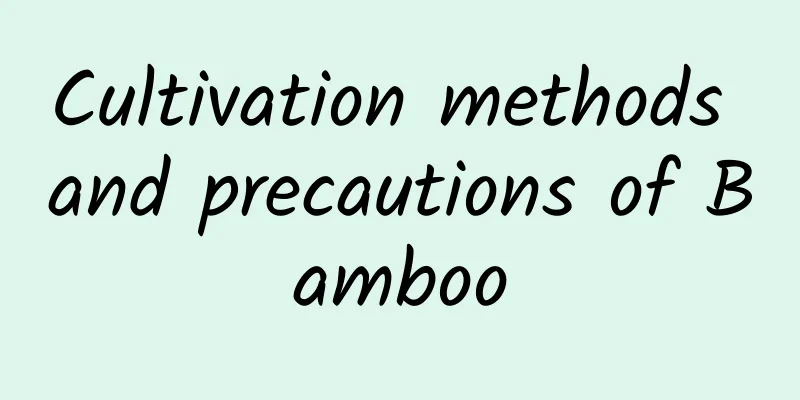Cultivation methods and precautions of Bamboo

|
Bamboo shoots are relatively easy to grow. They are a kind of weed and are very suitable for potted plants at home. This plant is not drought-tolerant, so special attention should be paid to water supply in daily maintenance. It is best to soak the roots of the newly acquired bamboo shoots in water first, and then place them in a shady and humid environment to maintain the seedlings for a period of time after absorbing enough water, and then transplant them into pots after a week. How to cultivate bamboo1. Lighting The bamboo itself is a plant that likes light, so when cultivating it, you must pay attention to supplementing light. However, when the temperature is relatively high in summer, it cannot be exposed to the sun. At this time, it is necessary to provide appropriate shade. If it is cultivated indoors, it is best to place it in a place that receives scattered light for a long time. 2. Soil For the bamboo, soft, fertile, well-drained neutral or slightly acidic soil is most suitable for its growth. It is best to choose soil containing humus. 3. Temperature The best growth temperature for Bamboo Sapium is between 15-30 degrees Celsius, so when the winter is too cold and the air temperature is below 15 degrees Celsius, it needs to be moved back indoors for cultivation. 4. Watering When watering the bamboo, you should water the potting soil and the leaves at the same time. This can increase the humidity around the plant. In rainy weather, if it is a light rain, you can let the bamboo be exposed to the rain for a while to add moisture to the soil and leaf surface. Precautions for the maintenance of Jicui bamboo1. Pay attention to ventilation When caring for the bamboo, it is recommended to place it in a ventilated environment, preferably a cool place, which can better help the growth of the bamboo. 2. Repotting If it is time to repot the bamboo, it is best to do so in rainy weather. At the same time, you should increase watering after repotting to ensure that it has sufficient moisture. |
<<: Advantages and disadvantages of Yoyo Rose
>>: Is the bougainvillea chameleon a frequent bloomer?
Recommend
How to grow Hoya
1. Breeding environment 1. Soil: When growing Hoy...
How to cultivate twig flower
Growing conditions of twig flower The branch flow...
The Chinese have quietly achieved a breakthrough in the free cultivation of morels
As one of the four famous mushrooms in the world,...
How to prune lace golden dew after flowering
Pruning lace lilies after flowering After the lac...
How to propagate the succulent plant snow lotus
Propagation by division When cultivating snow lot...
The best time to remove the apple bag (how long after the apple bag can be removed)
1. The time for picking bags must be appropriate ...
How to grow multi-lobed bamboo
1. Breeding conditions 1. Soil: The multi-fissure...
How to grow loofah to achieve high yield?
Luffa is a vegetable widely grown in rural areas....
Growing environment conditions and characteristics of golden thread vine
Growing environment conditions and requirements o...
Precautions for repotting Golden Edge Tiger Pilan
Precautions for repotting Golden Edge Tiger Pilan...
Plant Culture of Welwitschia
Birthday Star Their leaves are evergreen, and eac...
Cultivation methods and precautions of Crinum
1. Breeding methods 1. Soil: Crinum likes to grow...
How much is the average yield of yellow peach per mu? Planting technology and management
Yellow peach yield per mu The average yield of ye...
How to graft Ficus ginseng
Grafting of Ficus ginseng There are two methods o...
Can sphagnum moss be used to grow succulents?
Can sphagnum moss be used to grow succulents? Sph...









